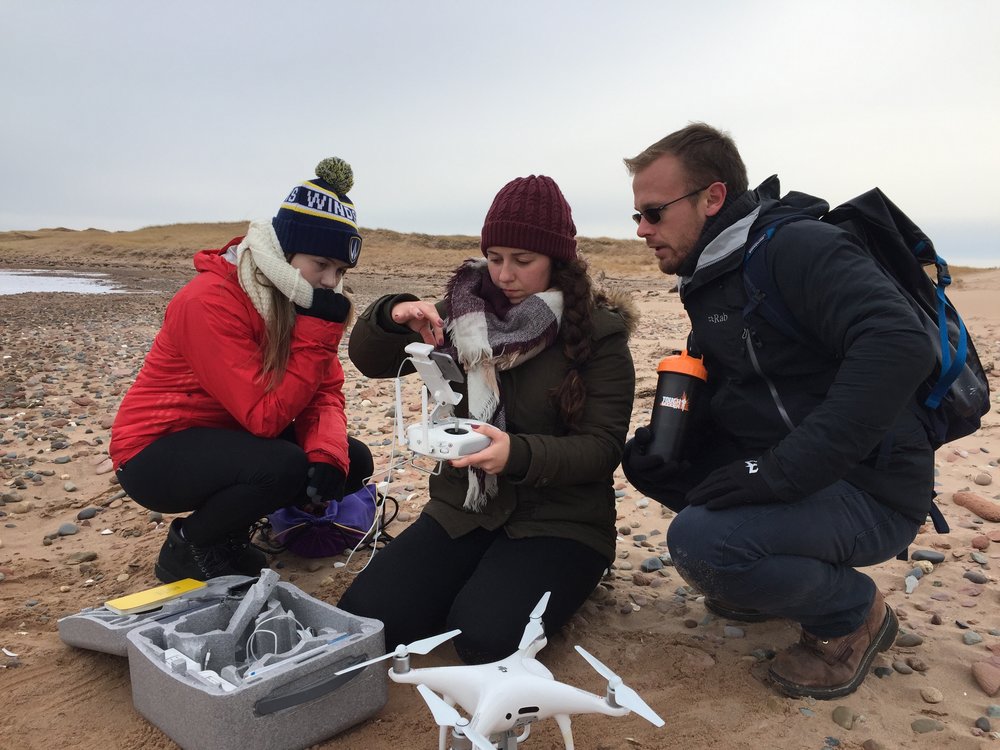A deep-dive into rip currents
It’s estimated that 80% of Canada’s drownings and rescues can be linked back to rip currents, but is the average beachgoer even considering the risks associated with their favourite shoreline? Curious about the social dimensions of the common hazard, University of Windsor Master’s student Summer Locknick applied to MEOPAR’s Fathom Fund with the aim of spending her namesake season doing research on this topic at two of Prince Edward Island’s most popular tourist beaches. She hoped her findings would help inform safety strategies, resulting in less drownings long-term. Thirty-six Kickstarter backers did too, donating over $6,000 towards her project costs and unlocking top-up funds from MEOPAR.
“I thought the Fathom Fund would be a good fit for my research project because it didn’t fall into the traditional natural science and engineering projects that typically get funded,” says Locknick. “It was a unique opportunity to get the community involved, since they are the ones who ultimately benefit from the research.”
In partnership with Parks Canada, she administered over 500 surveys to folks at Cavendish and Brackley beaches on PEI’s north coast, gathering information on beachgoer behaviour and background as well as coastal knowledge. Locknick also conducted a photo study to track conditions, beach morphology, the number of people in the water and where they chose to sit. Based on her early findings, she was able to make recommendations to Parks Canada regarding safety strategies.

“It was a unique opportunity to get the community involved, since they are the ones who ultimately benefit from the research.”
Her work on the shore attracted media attention and earned Locknick a nomination for the Canadian Drowning Prevention Coalition’s Drowning Prevention Award in Research, which she later won. She also co-authored a chapter on rip currents in Sandy Beach Morphodynamics, released in spring of 2020.
“Public crowdfunding from Fathom Fund allowed the general public to become more interested in my research. I believe that without it, I would not have been given the same opportunities with media, in-kind contributions and the Drowning Prevention Award,” says Locknick. “Fathom Fund gave me the platform to reach a high number of people who otherwise might not have known about the study.”

